Last Updated on October 3, 2022
On certain occasions, a particular sight will catch the eye of an observant vehicle owner. Those who are meticulous toward the care of their vehicle seem to know when something is awry and warrants a closer look. While that which is observed often turns out to be of little concern, there are times when one’s findings prove to be indicative of a larger issue.
Few circumstances illustrate this point quite as vividly as the discovery of shiny metallic particles in a vehicle’s oil. While many motorists do not understand the exact cause behind this abnormality, most realize that it is worthy of further investigation.
Read on to learn about the root cause behind the sudden appearance of fine metal shavings and metal flakes within a vehicle’s oil, as well as how to handle such a situation, should it arise in the future.
Is It Normal to Have Metal Shavings in Oil?

While the engine oil in almost any vehicle will contain small, microscopic metal particles, these particles should never be observable by the naked eye. The only exception to this rule is when these particles cling to a magnetic drain plug or other polarized objects. However, even then, such particles should be scarce in nature.
The sudden collection of metallic particles within an engine’s lubricating oil is never to be considered “normal”. Quite the contrary, this abnormality often indicates that something is amiss, in regards to an engine’s internal components or rotating assembly.
Sometimes an exception can be made if during the course of an oil change, the oil drain bolt’s threads became stripped. Even if you were to remove the drain plug, replace it, and maybe even rethread the oil pan hole, you may have a tiny amount of metal shavings show up in your oil drain pan as a result.
See Also: What Can Happen When You Drive With a Missing Oil Cap?
What Does Having Metal Shavings in Oil Indicate?
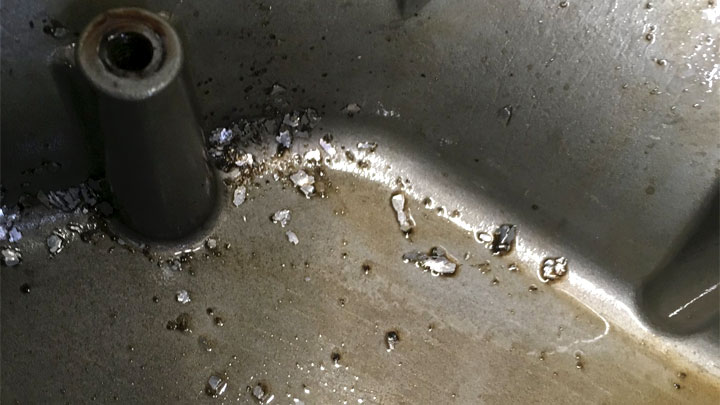
The sudden accumulation of metal shavings within an engine typically indicates accelerated wear of bearings or other reciprocating surfaces. As metal erodes away from these components, it is deposited in an engine’s oil, where it collects before being discarded during routine maintenance.
Unfortunately, once one or more of an engine’s bearings have begun to wear at an accelerated rate, irreversible damage has already been done. This pattern of wear typically continues and progresses with the passing of time. In most cases, metal shavings will be present with each subsequent oil change.
See Also: How to Remove a Stripped Drain Plug
How Serious is This Problem?
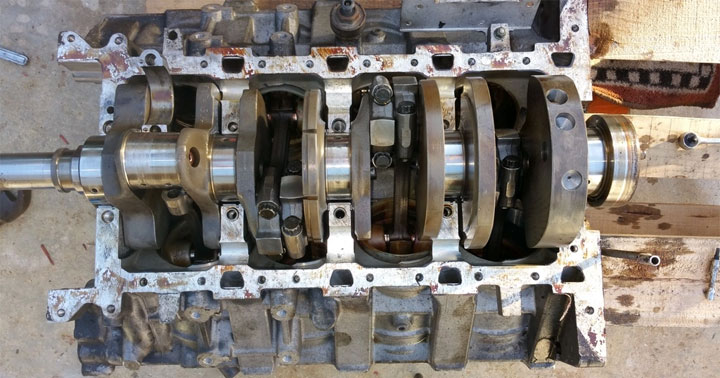
The problem with accelerated bearing wear is that it is a never-ending cycle. As an engine’s main, rod, and camshafts bearings wear, their tolerances increase beyond that specified by the manufacturer. These tolerances are vital to engine operation, as they directly correlate to an engine’s ability to maintain proper oil pressure.
With time, worn bearings no longer hold pressure in the same manner as they did when new, thereby allowing oil to pass without resistance. This often leads to a noticeable drop in oil pressure.
As a result of this reduction in oil pressure, an engine’s bearings are then starved for vital lubrication. This exponentially complicates matters and can lead to multi-bearing failure in short order.
In severe cases, the presence of a knocking or ticking noise can be heard during engine operation, which is largely indicative of later-stage bearing failure, as well as oil starvation to an engine’s top end.
Will an Oil Filter Catch Metal Shavings?
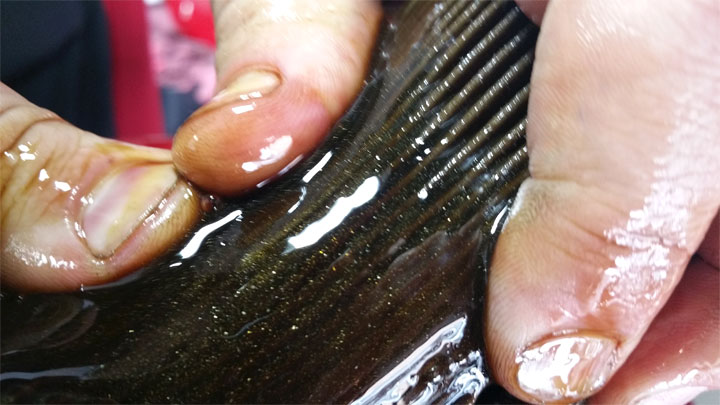
While an oil filter is excellent at catching a large percentage of metal contaminants within an engine’s oil, it is far from fool-proof. In general, an oil filter will catch the vast majority of large metal shavings circulating throughout an engine. However, many metallic particles are too small for even an oil filter to catch.
As a result, these microscopic particles continue to pass through an engine’s bearings, serving as an abrasive of sorts, along the way. With time, this can further accelerate bearing wear, especially if an engine’s oil is not changed at its factory recommended service interval.
When an engine’s state of health is in question, a closer look at a used oil filter can also prove valuable. In these situations, many mechanics will carefully cut the canister portion of an oil filter, to reveal its inner paper element.
This element can then be inspected for metal fragments and shavings, thereby providing clues to the overall health of an engine’s bearings and wear surfaces.
What To Do If You Find Metal Shavings in Your Engine Oil
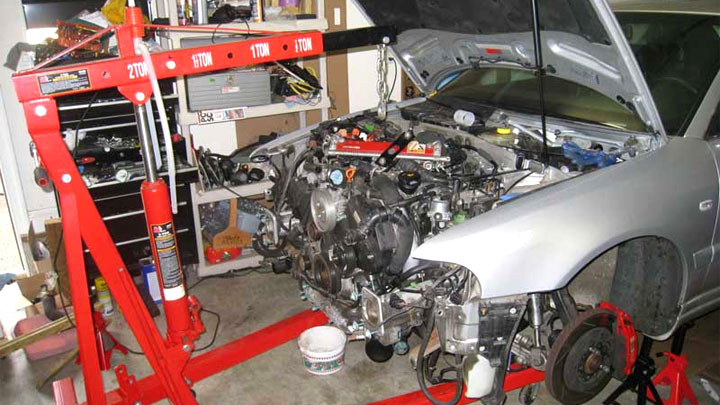
The discovery of metal shavings in your engine’s oil is definitely cause for concern, and should not be taken lightly. In any event, further diagnostics will be necessary.
In most cases, this will involve removing the engine’s oil pan and bearing caps, in order to carefully inspect the bearing surfaces for wear. If surface scarring or accelerated wear of any type becomes evident, a much greater issue is at hand.
Unfortunately, an individual’s options are limited when faced with rapidly deteriorating bearings within an engine’s rotating assembly. In the bulk of cases, engine removal and overhaul will be required. This can become a quite expensive undertaking, to say the least, with such repairs often exceeding the total value of many older, high-mileage vehicles.
Alternatively, some might find it cheaper to locate a replacement engine from a junkyard, as the cost associated with doing so is often less expensive than overhauling a vehicle’s current engine. This can be especially beneficial if you are up to the task of swapping the vehicle’s engine yourself, thereby eliminating any labor costs.
What About Metal Flakes in Your Transmission Fluid?
Unlike a vehicle’s engine oil, one can expect to observe some degree of metal shavings within their transmission’s fluid. This tends to be especially true if a vehicle has gone an extensive length of time without having its transmission oil changed.
These observable metal shavings are typically a product of normal internal gear mesh and are unlikely to indicate anything outside of normal wear. In fact, most transmission pans contain magnets to catch such debris.
However, one should keep their eye out for any large metal flakes, that are substantial enough to be pinched between your fingers, or that are sharp at their edges. Metal flakes of this type often indicate impending issues, due to abnormal wear. This is an issue that should be further diagnosed by a transmission specialist.

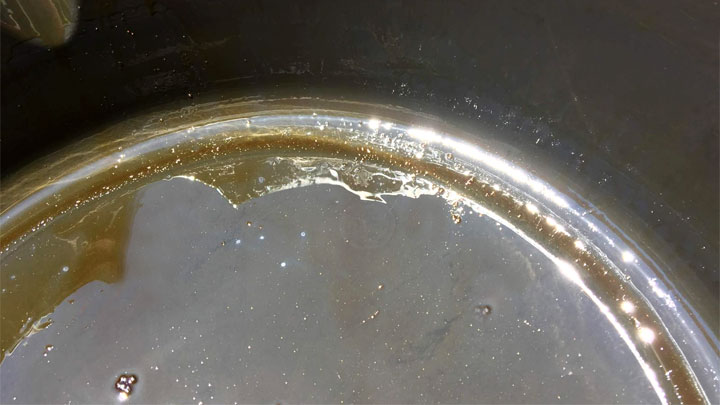
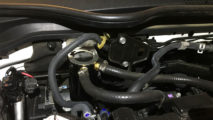
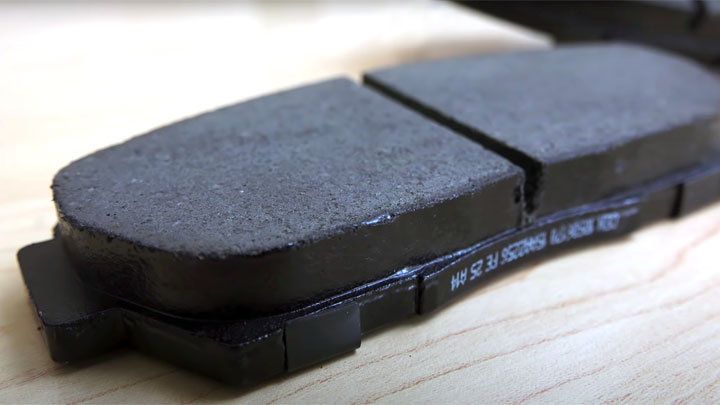
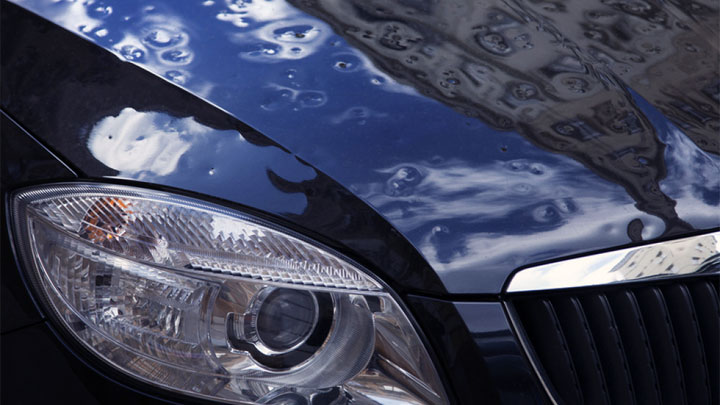
Not a bad article” but there is things still not addressed I would refer to call the items a few Gremlins under the hood. 1# The OEM dealer services your auto,what makes him better than XXX oil change? If I recall no dealer or auto shop conducts any real visual critical Oil Analysis as a proactive measure. The base line oil particle data for a engine oil analysis program is not available from the OEM dealer. To conduct a wear particle data analysis to create a baseline comparison to a proactive program. Makes you really think about the phrase “Who Knows Your Car Best” The heavy over the road trucks has been conducting wear metal,and contamination analysis for 40 years plus. You can see how these builders have extended their warranty.
I had what looked like metal in my old oil and filter about five years ago. I send my oil to stonewall lab and they only saw the oil filter was full of something. Turned out to be the plastic timing chain guides were done and the chain was slapping the walls. Luckily my mechanic noticed the sound, but the lab never caught the metal. Should of been aluminum.
1996 gmc Sonoma truck just turn 100,000 miles no problem w it was driving it running good an it just quit it starts but don’t sound good enough to drive someone said metal shavings in oil but never saw any when oil changed what’bcould be the problem
Who said metal shavings in the oil, and what was their reasoning? You might be able to pull the dipstick to quickly see if there are metal shavings.